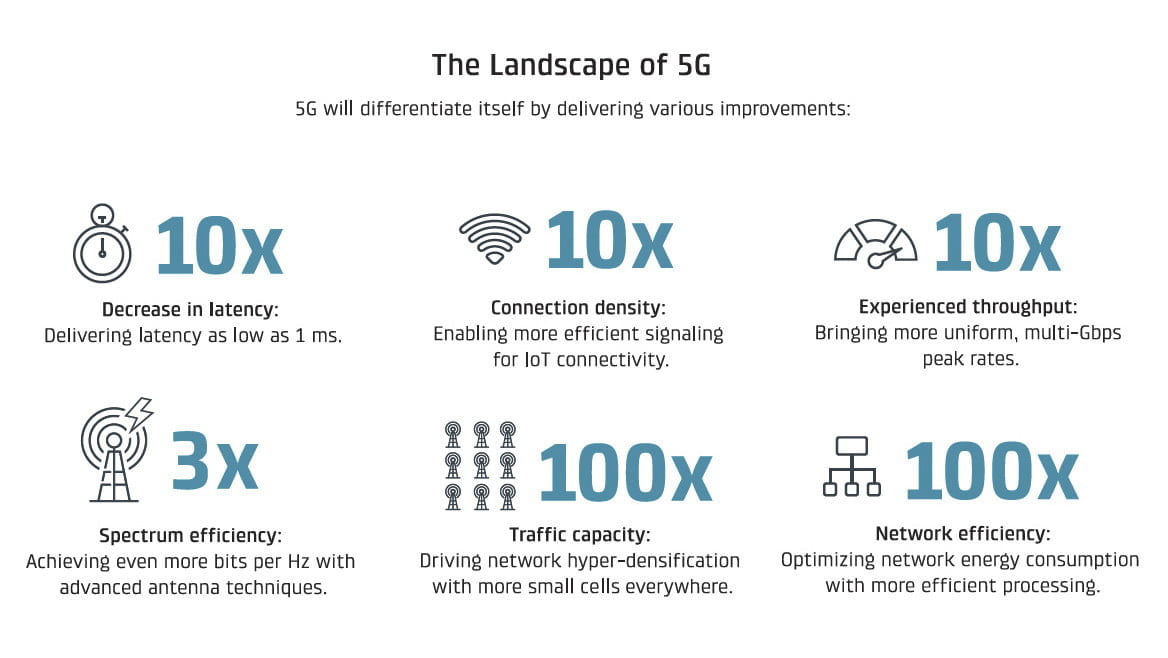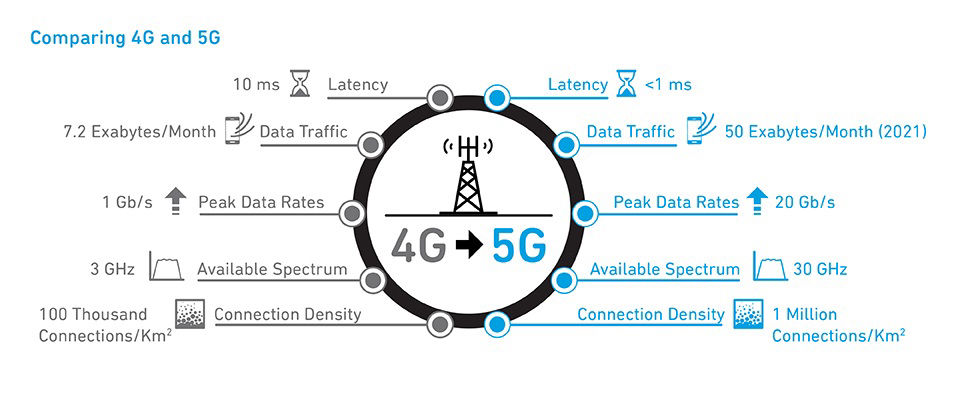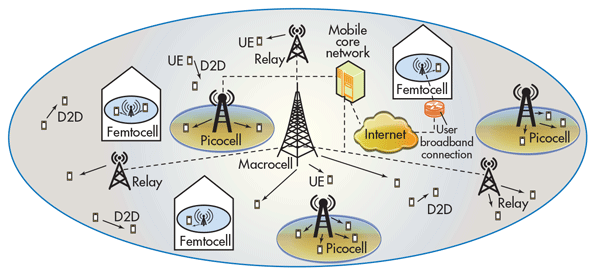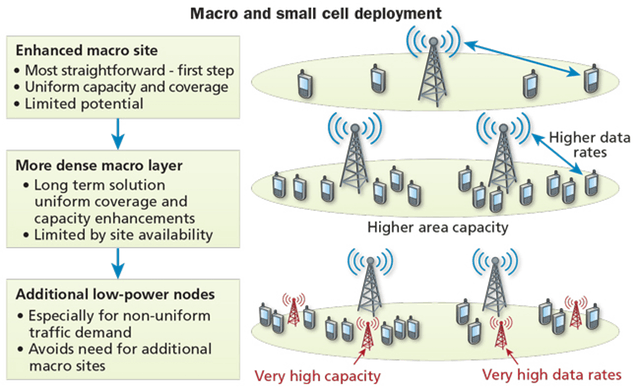
This post may contain affiliate links. Please read my disclaimer for more info.
In my previous two articles, we covered the history of mobile wireless networks and the different networks that have been deployed over the past 35+ years starting with 1G networks ending with the currently being deployed 5G Networks. We compared their overall capabilities and we focused on the latest technology 5G, about how it works, and about how different it is from pervious technologies. As also discussed in the previous article the current initial deployments of 5G focuses on the Radio or Last Mile part which is being deployed on the spectrum below 6 GHz. In addition, we will not essentially have a full end-to-end 5G network until the core has been upgraded which will not occur for another 1-2 years. Thus, our current deployments will not provide the full capabilities that we expect form 5G.

In this article I am going to dive more into the 5G Networks and try to answer the following additional questions people generally have:
1. Is it Safe?
In order to do this let’s first better understand more about the similarities and differences that might have an impact of the above two questions.

So is 5G safe or more particularly is it safer or less safe to humans and their health. To answer this question, we need to look at the differences and similarities between 5G and previous networks. Before starting I need to explain a basic principle about radio frequencies and how they work. Specifically, the lower the frequencies utilized for any technology the further they propagate/travel and the more they can penetrate buildings and obviously the opposite is exactly true.
Having said that, the initial 1G and 2G networks were deployed on spectrum/frequencies in the range of 800-900 MHz and because we initially had fewer number of users we didn’t need as many towers to cover large geographical areas. The newer 3G and 4G networks were initially deployed on 1800-1900 MHz and 2,100-2,400 MHz Spectrum respectively as the lower frequencies were not available. We also needed a large amount of spectrum which was more available at the higher frequencies as larger channels and a larger number of channels were needed to provide better services and higher throughputs. Furthermore, the number of subscribers had significantly increased.
This meant that we had to more than double the number of towers as we continued to use higher frequencies and as demand grew. Currently however, the 3G and 4G networks have now been deployed on the lower spectrum of 700-900 MHz allowing for better coverage in-building but we had to maintain the number of towers to provide for the continuingly increasing demand. In addition, we now have multiple layers being used to provide the services required. The normal macro layer which is essentially made up of all the radio towers and rooftop installations and a new micro/pico/femto layer which is used at the street level and in-doors to provide hotspot coverage for high demand areas.

So even with the technologies prior to 5G we have continuously had to increase the number of sites/towers to keep up with the demand. So now the question beckons do we need to keep doing this with 5G, by how much and more importantly how will this affect human health? The simple answer to this first question is a resounding yes. This is due mainly to the fact that the demand for higher throughputs and better mobile services will continue to increase just as it has over the past 3+ decades. In addition, technological breakthroughs continue to make it possible for advancements in this field as well as many others.
Thus, we will continually need to utilize higher frequencies to provide a larger spectrum for these advanced services as is already in the works for 5G. Initial deployments of 5G will utilize existing spectrum in the 3,500 MHz or 3.5 GHz but will quickly move into the spectrum above 10 GHz. In North America as well as other parts of the world however, the 28 GHz and similar spectrum has already been auctioned and sold to operators for billions of dollars.
These operators are already planning to deploy 5G on this newly acquired spectrum in major cities. To do this and to provide the coverage needed utilizing this new spectrum they will need to deploy 10x the existing number of sites/towers. This is needed in addition to utilizing all new technological advancements and larger spectrum to provide the required services. If not for these advancements, we might need 20-30x the number of sites/towers.

Over the years we have continuously asked these exact same questions about the previously deployed networks and there have been many studies done (too many in my opinion but that’s beside the point) to determine the effect of deploying these technologies on human health. Without going into specific studies as that is not the focus here, these articles have covered the entire spectrum with some saying that there is no effect on human health to ones saying that these networks can significantly cause serious health issues even resulting in deadly diseases such as cancer and the like.
Having said all of that, telecommunications and information technology has seen an exponential growth over the past 35+ years but as that has happened the technology has significantly improved. 30 years ago, a supercomputer used to be the size of a single floor in somewhat large building. We now have super computers that are the size of a server or slightly bigger. These advancements in technology also apply to mobile communications. Meaning that we can do much more while utilizing smaller components and less power to achieve our objectives. This is one of the main goals of 5G and that is to utilize the spectrum more efficiently by using less power or transmitting no power at all when the technology is not being used which will reduced the amount radio magnetic waves being transmitted while also resulting in less interference and as a result better services. Even the use of higher spectrum which requires an increase in the number of towers will not provide more radiation but rather less as we are not increasing the power being transmitted but rather using it more efficiently through a mixture of large and small cells to provide the required services.
In conclusion, I want to say that technology is not the issue here and how safe or unsafe it is does not depend on the technology but rather on how we use it. So, what do I mean by this? We are not going to stop technology or its advancements but what we can do is learn how to properly use it by following some basic guidelines. Firstly, we need to ensure that we have proper regulations in place and that they are being followed by network operators, vendors and infrastructure providers. Secondly, we need to teach ourselves and our kids some good habits. By good habits, I mean limiting the usage of technologies whether it be mobiles, laptops, tv, tablets and the like. Our newer generations need to learn that there are other activities they can carry out outside the confines of their home or dwelling. We need to educate ourselves and the next generations to be more social and to interact with others in the world not just through computers, mobiles and mobile networks but through physical interaction. We need to utilize technology to enhance our lives rather than destroy it. If we can do that then we can enjoy all these technological breakthroughs and what they have to offer without worrying about the health effects on our lives.
